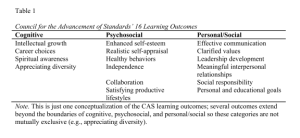Over the past several years I have facilitated countless professional developments for our iTeachAZ Site Coordinators, mentor teachers and teacher candidates, one question that I always ask when I am beginning a session on teaching is, “when you walk out of a lesson that you deem to be effective, what elements have led you to that decision?” Nearly every time I ask that question, participant responses include things like…lessons should be appropriately challenging or students should be a little uncomfortable. These responses, although I am in agreement with them, have always puzzled me. How do you measure the appropriate amount of discomfort or challenge without losing the students’ motivation to stay involved in the lesson? How do we equip students to have the tools necessary to persevere in spite of their desire to want to give up when solving difficult tasks?
In ‘Managing uncertainty during collaborative problem solving in elementary school teams: The role of peer influence in robotics engineering activity”, Jordan and McDaniel (in press), conducted a qualitative study on fifth graders. The study focused on collaborative groups and the role that the groups played in how students responded to content and uncertainty while working on engineering projects. They explain, “managing uncertaintyrefers to behaviors an individual engages in to enable action in the face of uncertainty. Uncertainty is a regularly occurring experience for humans. Although it is often a difficult experience to manage, it is not inherently an aversive state. Individuals are often motivated to reduce uncertainty through various information-seeking strategies” (p.5). Jordan et al. describes that uncertainty (or what I described above as appropriate challenge/discomfort) is a feeling and our natural response is to try to minimize it. Furthermore, they imply that there are strategies that can equip students to persevere and not let the feelings of uncertainty result in mismanagement.
In the study, Jordan et al. emphasize the importance of relationships and the key role that they play in supporting students to work through their uncertainty. They describe various responses that students had while working on the engineering project. They observed interactions amongst the collaborative groups and examined the influence that the collaborative peers had on one another. During one observation, the authors observed a student who wasn’t able to articulate her uncertainty. They noticed that one of the group members began to question, challenge, and explain information to this student to assist her in articulating the uncertainty. The authors noted, “for this peer response to occur, a responder had to believe the uncertainty being expressed by his or her peer was at a minimum legitimate, warranted, or reasonable” (p. 20). This response by the authors implies that students need to have the ability to empathize or see things from a different perspective in order to respond appropriately and support their peers. In this instance, for example, what would’ve happened if the peer didn’t have empathy? What effect would that have had on her ability to move forward and persevere with the project?
Empathy, which is an emotional intelligence competency, allowed the peers to respond by willingly supporting the student who was struggling. Jordan et al. echoes this idea and states, “students’ success at managing uncertainty during collaborative problem solving was dependent on the willingness and ability of their peer collaborators to respond supportively. As students received responses from peers, those responses acted as negative or positive feedback for subsequent attempts to manage uncertainty” (p. 26). The authors go on to further describe groups that did not have supportive peers and the effects that it had on the group members. They labeled these groups as “not particularly well-functioning” (p. 28).
Reverting back to the question about equipping students with the necessary tools to persevere in spite of uncertainty, it’s clear from the study that cooperative learning played a critical role in students’ perseverance with completing engineering projects. One would argue, however, that the group members, who lacked the emotional intelligence to empathize and support their peers, had an adverse effect on the students’ ability to move forward with the project.
Daniel Goleman (1995) first introduced the idea that one’s social skill, or emotional intelligence (EI), is a great contributor to relational success. There are several competencies that fall under the umbrella of EI including self-awareness, emotional management, empathy, and social competence. Further, Low and Nelson (2006) explain EI as a “learned ability to understand, use, and express human emotions in healthy and productive ways” (p. 2). Both Goleman and Low agree that these skills need to be taught and developed. As I conclude, it would seem that peer influence can be an effective tool, when the students are equipped with the emotional intelligence competencies to support their peers.
References
Goleman, D. (1995). Emotional Intelligence: Why it can matter more than IQ for character, health, and lifelong achievement. New York, NY: Ban- tam Books.
Jordan, M.E. & McDaniel, (in press). Managing uncertainty during collaborative problem solving in elementary school teams: The role of peer influence in robotics engineering activity. Journal of the Learning Sciences. Doi: 10.1080/10508406.2014.896254
Low, G. R., & Nelson, D. B. (2006). Emotional Intelligence and college success: A research- based assessment and intervention model. In Center for Education Development & Evaluation (CEDER) Retrieved from Texas A&M University-Kingsville website: 1-10. http:// www.operamentis.com/upload/O/EI_and_ College_Success-2006.cederpaper.pdf


